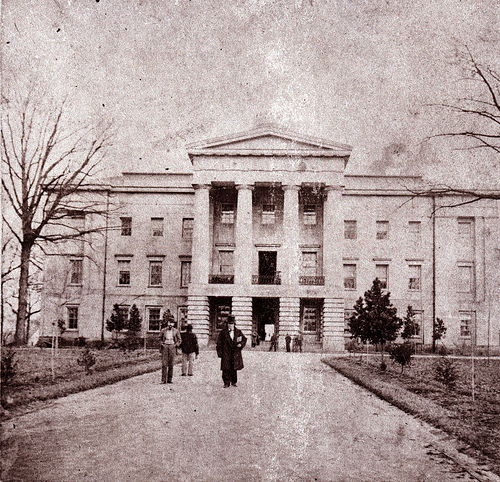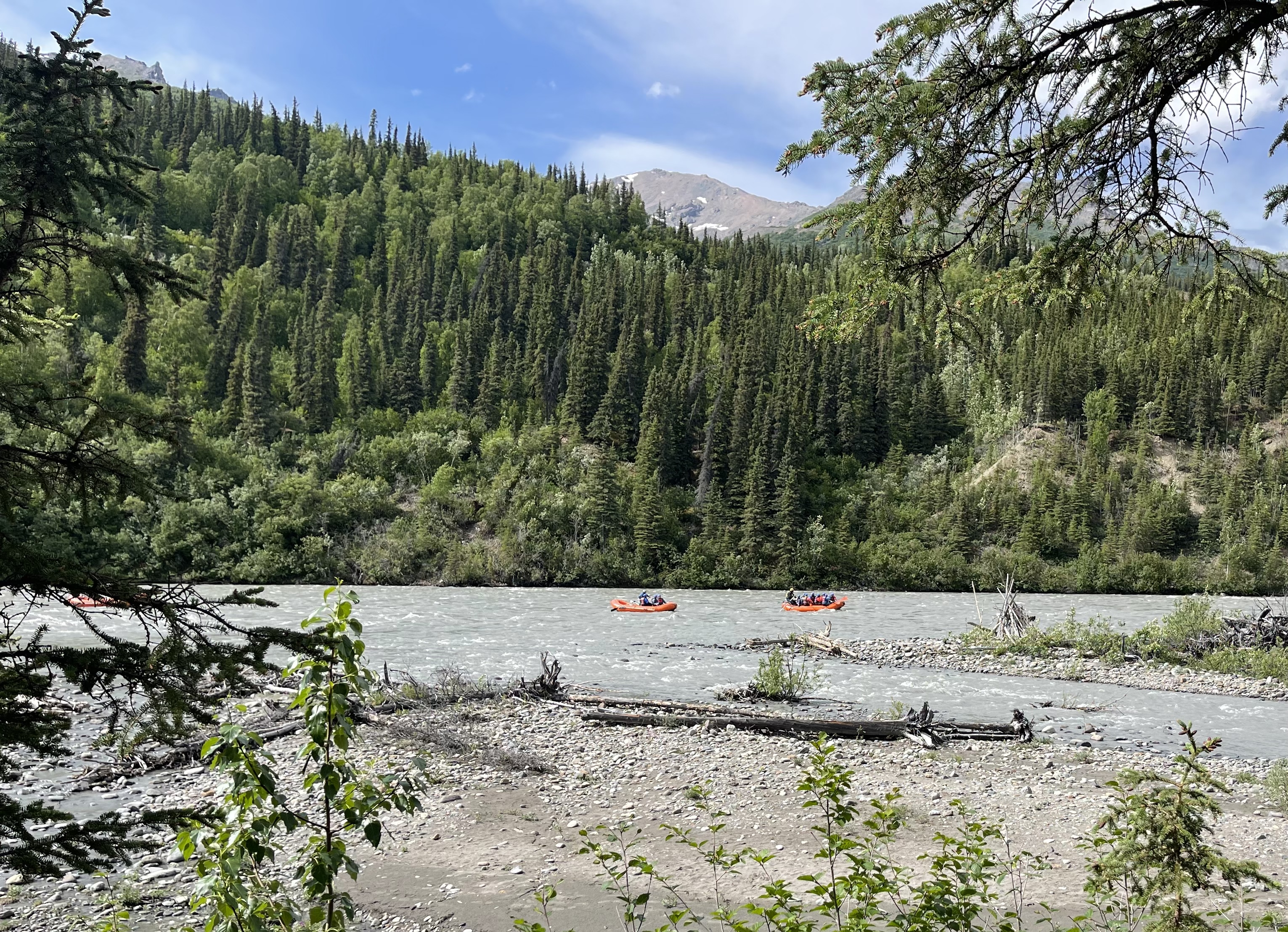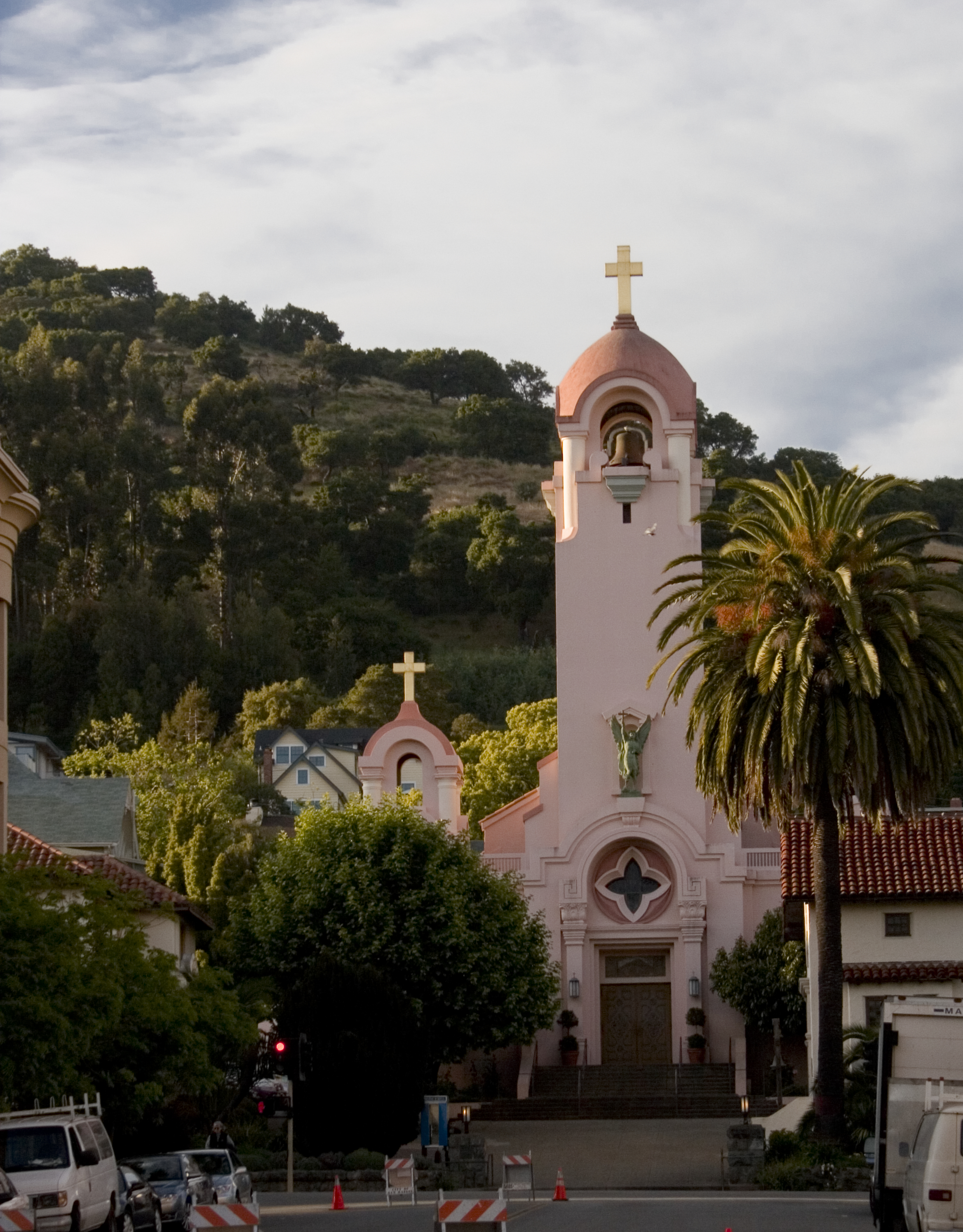|
John C. Cantwell
John Cassin Cantwell (9 January 1859 – 8 October 1940) was a United States Coast Guard officer and early United States explorer of Alaska. Biography Born in Raleigh, North Carolina, Cantwell was the son of an Irish-born military officer who sent him to study at a Catholic Church, Roman Catholic seminary in Ireland. Returning to the United States, he joined the United States Revenue Cutter Service as a seaman in 1879. After a year, he passed a competitive officer candidate examination and became a cadet on 7 June 1880. He was commissioned as a third lieutenant on 5 July 1882. In 1884, Cantwell was assigned to the USRC Thomas Corwin, USRC ''Thomas Corwin'' based at San Francisco. Under the command of Captain Michael A. Healy, the ''Thomas Corwin'' made summer patrols to the Bering Sea and Alaskan coast in both 1884 and 1885. The delta and lower part of the Kobuk River, Kowak River having been explored by United States Navy, U.S. Navy Lieutenant George M. Stoney in 1883, Cantwell w ... [...More Info...] [...Related Items...] OR: [Wikipedia] [Google] [Baidu] |
Raleigh, North Carolina
Raleigh (; ) is the capital city of the state of North Carolina and the seat of Wake County in the United States. It is the second-most populous city in North Carolina, after Charlotte. Raleigh is the tenth-most populous city in the Southeast, the 41st-most populous city in the U.S., and the largest city of the Research Triangle metro area. Raleigh is known as the "City of Oaks" for its many oak trees, which line the streets in the heart of the city. The city covers a land area of . The U.S. Census Bureau counted the city's population as 474,069 in the 2020 census. It is one of the fastest-growing cities in the United States. The city of Raleigh is named after Sir Walter Raleigh, who established the lost Roanoke Colony in present-day Dare County. Raleigh is home to North Carolina State University (NC State) and is part of the Research Triangle together with Durham (home of Duke University and North Carolina Central University) and Chapel Hill (home of the Univer ... [...More Info...] [...Related Items...] OR: [Wikipedia] [Google] [Baidu] |
Kobuk River
The Kobuk River (''Kuuvak'' in Iñupiaq) (also Kooak, Kowak, Kubuk, Kuvuk, or Putnam) is a river located in the Arctic region of northwestern Alaska in the United States. It is approximately long. Draining a basin with an area of ,Brabets, T.P., Hydrologic Data and a Proposed Water-Quality Monitoring Network for the Kobuk River Basin, Gates of the Arctic National Park and Preserve, and Kobuk Valley National Park, Alaska. U.S. Geological Survey, Water Resources Investigations Report 01-4141, 2001 the Kobuk River is among the largest rivers in northwest Alaska with widths of up to 1,500 feet (460 m) and flow at a speed of 3–5 miles per hour (5–8 km per hour) in its lower and middle reaches.Kobuk Valley National Park Final Environmental Impact Statement, National Park Service The average elevation for the Kobuk River Basin is above sea level, ranging from near sea level to 11,400 feet (3,475 m). Topography includes low, rolling mountains, plains and lowlands, moderately hi ... [...More Info...] [...Related Items...] OR: [Wikipedia] [Google] [Baidu] |
1940 Deaths
Year 194 ( CXCIV) was a common year starting on Tuesday (link will display the full calendar) of the Julian calendar. At the time, it was known as the Year of the Consulship of Septimius and Septimius (or, less frequently, year 947 ''Ab urbe condita''). The denomination 194 for this year has been used since the early medieval period, when the Anno Domini calendar era became the prevalent method in Europe for naming years. Events By place Roman Empire * Emperor Septimius Severus and Decimus Clodius Septimius Albinus Caesar become Roman Consuls. * Battle of Issus: Septimius Severus marches with his army (12 legions) to Cilicia, and defeats Pescennius Niger, Roman governor of Syria. Pescennius retreats to Antioch, and is executed by Severus' troops. * Septimius Severus besieges Byzantium (194–196); the city walls suffer extensive damage. Asia * Battle of Yan Province: Warlords Cao Cao and Lü Bu fight for control over Yan Province; the battle lasts for over 100 ... [...More Info...] [...Related Items...] OR: [Wikipedia] [Google] [Baidu] |
1859 Births
Events January–March * January 21 – José Mariano Salas (1797–1867) becomes Conservative interim President of Mexico. * January 24 ( O. S.) – Wallachia and Moldavia are united under Alexandru Ioan Cuza (Romania since 1866, final unification takes place on December 1, 1918; Transylvania and other regions are still missing at that time). * January 28 – The city of Olympia is incorporated in the Washington Territory of the United States of America. * February 2 – Miguel Miramón (1832–1867) becomes Conservative interim President of Mexico. * February 4 – German scholar Constantin von Tischendorf rediscovers the ''Codex Sinaiticus'', a 4th-century uncial manuscript of the Greek Bible, in Saint Catherine's Monastery on the foot of Mount Sinai, in the Khedivate of Egypt. * February 14 – Oregon is admitted as the 33rd U.S. state. * February 12 – The Mekteb-i Mülkiye School is founded in the Ottoman Empire. * February 17 – French naval forces under Ch ... [...More Info...] [...Related Items...] OR: [Wikipedia] [Google] [Baidu] |
Nenana River
The Nenana River ( taa, Nina No’) is a tributary of the Tanana River, approximately long, in central Alaska in the United States. It drains an area on the north slope of the Alaska Range on the south edge of the Tanana Valley southwest of Fairbanks. It issues from the Nenana Glacier in the northern Alaska Range, southwest of Mount Deborah, approximately 100 mi (160 km) south of Fairbanks. It flows briefly southwest, then west, then north, forming the eastern boundary of Denali National Park and Preserve. It emerges from the mountains onto the broad marshy Tanana Valley, joining the Tanana River from the south at Nenana, Alaska, approximately southwest of Fairbanks. The Tanana River continues to its confluence with the Yukon River. The upper valley of the river furnishes approximately 100 mi (160 km) of the northern route of both the Alaska Railroad and the Parks Highway (Alaska State Highway 3) connecting Fairbanks and Anchorage. The Nenana supports po ... [...More Info...] [...Related Items...] OR: [Wikipedia] [Google] [Baidu] |
Cantwell, Alaska
Cantwell (''Yidateni Na’'' in Ahtna Athabascan) is a census-designated place (CDP) in Denali Borough, Alaska, United States. As of the 2020 census, the population of the CDP was 200. Cantwell is the western terminus of the Denali Highway. Once an Alaska Railroad flag stop at the junction with the Denali Highway, it was founded off the Parks Highway. History Cantwell is named after Lieutenant J. C. Cantwell, military explorer and commander of the revenue steamer ''Corwin'' on the Yukon River, 1898-1900. Prior to the settlement, the only inhabitants of the Cantwell area were nomadic Tanana Indians and Athabascan Native Alaskans who hunted and fished. In their language they named Cantwell ''Yede'teni'na''. The town began as a flag stop on the Alaska Railroad. This flagstop supplied the Valdez Creek mining area, which had the name "Denali" for the Valdez Creek community. Many Indians from the village of Tyone came to work at Valdez Creek and later lived out their lives in th ... [...More Info...] [...Related Items...] OR: [Wikipedia] [Google] [Baidu] |
Cantwell Glacier
Cantwell Glacier is a glacier in Denali National Park and Preserve in the U.S. state of Alaska. The long glacier originates from the crest of the Alaska Range in the eastern part of the park, giving rise to Cantwell Creek. See also * List of glaciers A glacier ( ) or () is a persistent body of dense ice that is constantly moving under its own weight; it forms where the accumulation of snow exceeds its ablation (melting and sublimation) over many years, often centuries. Glaciers slowly defor ... References Glaciers of Denali Borough, Alaska Glaciers of Denali National Park and Preserve Glaciers of Alaska {{Alaska-glacier-stub ... [...More Info...] [...Related Items...] OR: [Wikipedia] [Google] [Baidu] |
Pacific Ocean
The Pacific Ocean is the largest and deepest of Earth's five oceanic divisions. It extends from the Arctic Ocean in the north to the Southern Ocean (or, depending on definition, to Antarctica) in the south, and is bounded by the continents of Asia and Oceania in the west and the Americas in the east. At in area (as defined with a southern Antarctic border), this largest division of the World Ocean—and, in turn, the hydrosphere—covers about 46% of Earth's water surface and about 32% of its total surface area, larger than Earth's entire land area combined .Pacific Ocean . '' Britannica Concise.'' 2008: Encyclopædia Britannica, Inc. The centers of both the [...More Info...] [...Related Items...] OR: [Wikipedia] [Google] [Baidu] |
Marin County, California
Marin County is a county located in the northwestern part of the San Francisco Bay Area of the U.S. state of California. As of the 2020 census, the population was 262,231. Its county seat and largest city is San Rafael. Marin County is across the Golden Gate Bridge from San Francisco, and is included in the San Francisco–Oakland–Berkeley, CA Metropolitan Statistical Area. Marin County's natural sites include the Muir Woods redwood forest, the Marin Headlands, Stinson Beach, the Point Reyes National Seashore, and Mount Tamalpais. As of 2019, Marin County had the sixth highest income per capita of all U.S. counties, at $141,735. The county is governed by the Marin County Board of Supervisors. The Marin County Civic Center was designed by Frank Lloyd Wright and draws thousands of visitors a year to guided tours of its arch and atrium design. In 1994, a new county jail facility was embedded into the hillside nearby. The United States' oldest cross country running ... [...More Info...] [...Related Items...] OR: [Wikipedia] [Google] [Baidu] |
Norfolk, Virginia
Norfolk ( ) is an independent city (United States), independent city in the Commonwealth (U.S. state), Commonwealth of Virginia in the United States. Incorporated in 1705, it had a population of 238,005 at the 2020 United States Census, 2020 census, making it the List of cities in Virginia, third-most populous city in Virginia after neighboring Virginia Beach, Virginia, Virginia Beach and Chesapeake, Virginia, Chesapeake, and the List of United States cities by population, 94th-largest city in the nation. Norfolk holds a strategic position as the historical, urban, financial, and cultural center of the Hampton Roads region, which has more than 1.8 million inhabitants and is the thirty-third largest Metropolitan Statistical area in the United States. Officially known as ''Virginia Beach-Norfolk-Newport News, VA-NC MSA'', the Hampton Roads region is sometimes called "Tidewater" and "Coastal Virginia"/"COVA," although these are broader terms that also include Virginia's Eastern Shor ... [...More Info...] [...Related Items...] OR: [Wikipedia] [Google] [Baidu] |
Yukon River
The Yukon River ( Gwich'in: ''Ųųg Han'' or ''Yuk Han'', Yup'ik: ''Kuigpak'', Inupiaq: ''Kuukpak'', Deg Xinag: ''Yeqin'', Hän: ''Tth'echù'' or ''Chuu k'onn'', Southern Tutchone: Chu Nìikwän, russian: Юкон, Yukon) is a major watercourse of northwestern North America. From its source in British Columbia, Canada, it flows through Canada's territory of Yukon (itself named after the river). The lower half of the river continues westwards through the U.S. state of Alaska. The river is long and empties into the Bering Sea at the Yukon–Kuskokwim Delta. The average flow is . The total drainage area is , of which lies in Canada. The total area is more than 25% larger than Texas or Alberta. The longest river in Alaska and Yukon, it was one of the principal means of transportation during the 1896–1903 Klondike Gold Rush. A portion of the river in Yukon—"The Thirty Mile" section, from Lake Laberge to the Teslin River—is a national heritage river and a unit of Klondik ... [...More Info...] [...Related Items...] OR: [Wikipedia] [Google] [Baidu] |
Charles Haskins Townsend
Charles Haskins Townsend (September 29, 1859 – January 28, 1944) was an American zoologist and naturalist who served as the director of the New York Aquarium, from 1902 to 1937. Early life The son of the Reverend Daniel W. Townsend and Elizabeth Townsend, née Kier, he was born in Parnassus, Pennsylvania,"Townsend, Charles Haskins" in ''Who Was Who in America: Science and Technology.'' (1976). Marquis Who's Who. p. 610. and educated in public and private schools. He was a graduate of the Academy of Natural Sciences of Philadelphia."The South Seas - C.H. Townsend to Speak on That Subject," ''The Evening Republican'', Meadville, PA., p. 2, Friday, May 29, 1903 He subsequently worked at the Smithsonian Institution. Career In 1883, he became assistant United States Fish Commissioner in charge of salmon propagation in California. For a time, he was in charge of deep-sea explorations on the USS ''Albatross''. From 1897 to 1902, he served as chief of the Fish Commission's fisheries d ... [...More Info...] [...Related Items...] OR: [Wikipedia] [Google] [Baidu] |




.jpg)


